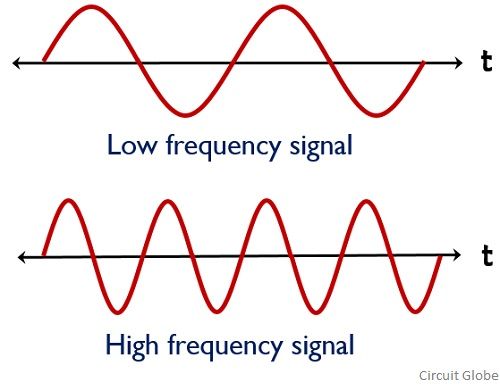Both frequency and wavelength are the two terms used in reference to any waveform. The crucial difference between frequency and wavelength is that frequency shows the total number of wave oscillations in a given time. As against wavelength specifies the distance between two specific points of a wave.
The specific points on a wave can be crest, trough or zero crossing.
Content: Conduction Vs Induction
Comparison Chart
| Basis for Comparison | Frequency | Wavelength |
|---|---|---|
| Basic | The number of complete wave cycle per second is known as frequency. | Wavelength is the total length of one complete wave. |
| Measures | Time | Distance |
| Denoted as | f | λ |
| Measuring Unit | Hertz | Meter |
| Given as | f = v / λ | λ = v / f |
| Range | Audible frequency range lies between 20 Hz to 20 KHz. | Wavelength of a visible light ranges from 400 nm to 700 nm. |
Definition of Frequency
Frequency is defined as a total number of vibrations or oscillations present in a wave in a unit time. The fundamental unit of measuring the frequency is Hertz, shortly written as Hz. Suppose a sound wave is producing total 5 complete vibrations in a second. Then it is said that the frequency of the wave is 5 Hz. Thus we can say, 1 Hz of frequency specifies 1 complete vibration or oscillation per second.
Consider the figure given below:
As we can see that the total number of vibrations produced per second is less in the first case than the second case. Thus the first wave is a low-frequency wave while second is the high-frequency wave.
The frequency of waves can have values up to a larger range like kHz or MHz. Frequency is generally denoted as ‘f’ or ‘ν’. The time duration in which one complete wave is produced is known as time period.
Frequency is a parameter used to explain the oscillatory or vibratory motion like sound wave, lightwave, mechanical vibration etc. The relation between frequency and time period is given as:
F = 1/T
The time period tells the minimum duration after which the wave motion is repeated. So, the reciprocal of the time period provides the number of repetitions occurring in a unit time i.e., frequency. The audible frequency range lies between 20 Hz to 20 kHz. And it is determined by the source by which it is produced.
Definition of Wavelength
The minimum distance between the two consecutive identical wave points is known as wavelength. As it specifies the distance thus its fundamental unit is meter. Consider the figure below:
So, one wavelength is the length between two consecutive crests or troughs or zero crossing in the phase similar to wave motion. And it is measured in the direction of motion of the wave. Wavelength is denoted as ‘λ’.
When the wavelength is small or we can say when sound waves are nearer then higher tones are produced. While when the distance between sound waves is more i.e., the wavelength is higher, then lower pitch sounds are produced. This means that wave with higher frequency reaches the listener faster than low-frequency wave.
Key Differences between Frequency and Wavelength
- Frequency defines the total number of occurrence of oscillations in a unit time. While wavelength is defined as the length of a wave.
- Frequency measures the time whereas wavelength measures the distance.
- Hertz is the measuring unit of frequency. While meter is the measuring unit of wavelength.
- In relation to speed, frequency is the ratio of speed and wavelength. As against wavelength is the ratio of speed and frequency.
- An audible sound wave possesses a frequency range of 20 to 20 kHz. But the wavelength of visible light ranges from 400 to 700 nm.
Conclusion
So, from this discussion we can conclude that wavelength and frequency are related to each other by the expression:
Thus the two shows inverse proportionality wrt each other. So, if two waves are travelling with the same speed then wave with higher frequency will have a greater wavelength and vice-versa.




Thanks… really useful